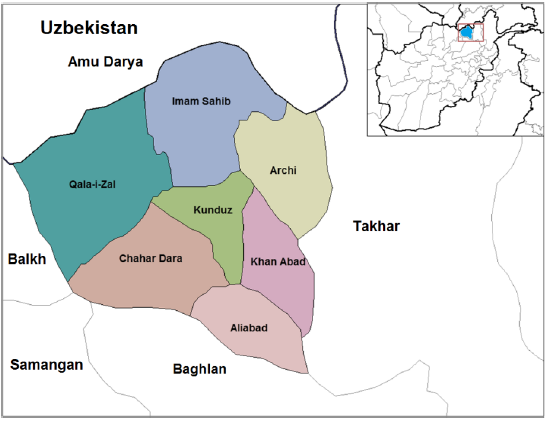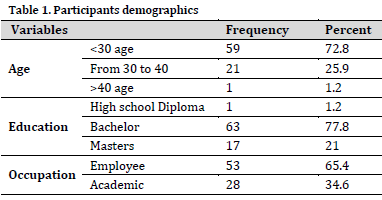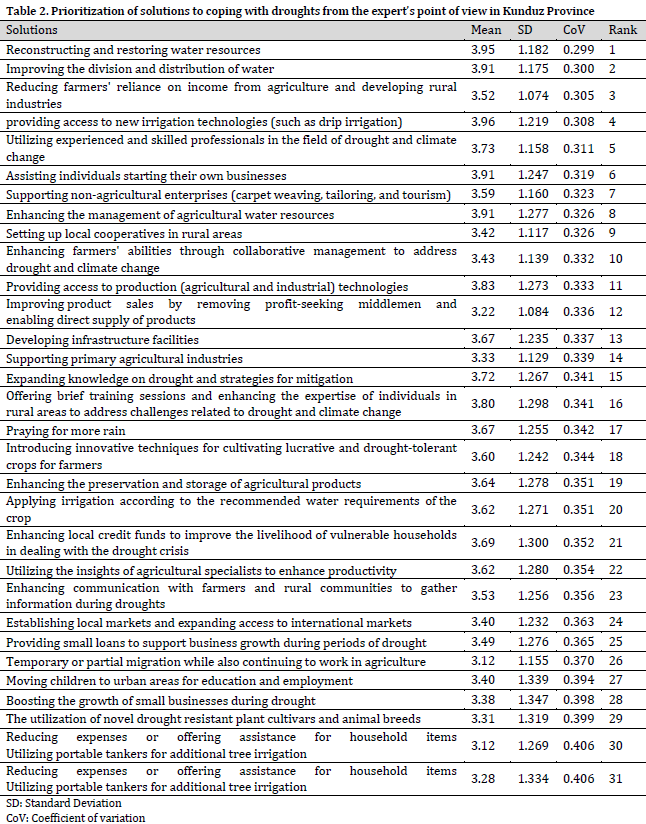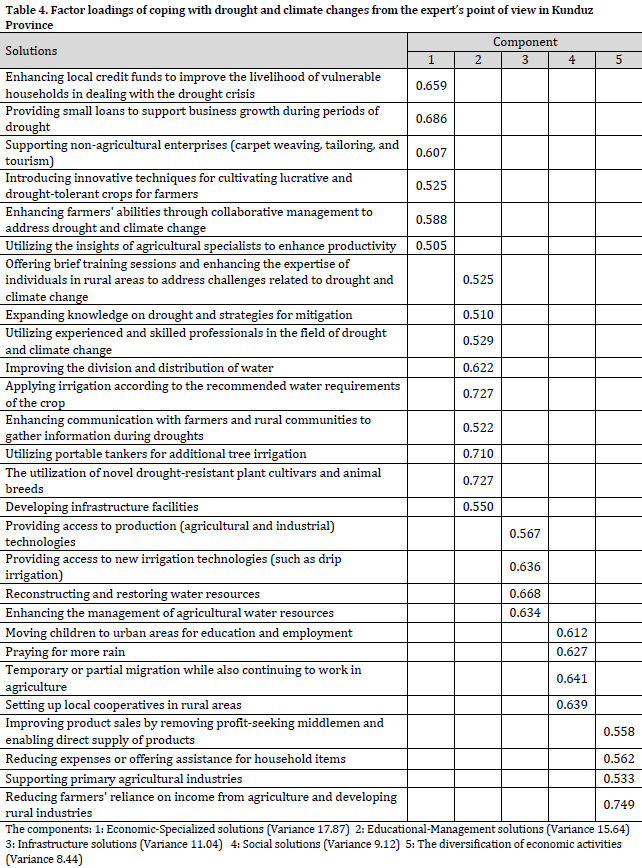Muhammad Asef Shaiq 1*; Hafizullah Aiuby 2; Maryam Hayat 3
1, Agricultural Extension and Economics Department, Faculty of Agriculture, Baghlan University, Afghanistan
2, Finance and Banking Department, Faculty of Economics, Kunduz University, Afghanistan
3, The Scientific Collaboration of Economic Faculty, Kunduz University, Afghanistan
E-mail:
asef.shaiq@gmail.com
Received: 10/02/2024
Acceptance: 22/03/2024
Available Online: 24/03/2024
Published: 01/07/2024

Manuscript link
http://dx.doi.org/10.30493/DAS.2024.442563
Abstract
Drought can result in starvation, malnutrition, heightened migration, and societal damage. Kunduz province, a significant contributor to the Afghanistan’s agricultural output, has experienced successive waves of drought affecting all aspects of life, which calls for radical solutions of this issue in the province. This research aimed to examine the views of specialists in Kunduz province towards the methods for dealing with droughts. The statistical population of the research consisted of 81 economic and agricultural experts from Kunduz province, selected by the counting method. The data collection instrument used was a questionnaire constituted of 31 strategies of coping with drought graded on a 5-point scale. Centrality and dispersion statistics were utilized together with the coefficient of variation and exploratory factor analysis to analyze and characterize the data. The coefficient of variations revealed that the top priority solutions included water resource reconstruction and restoration, improved water division and distribution, decreased reliance of farmers on agricultural income, rural industry development, and adoption of new irrigation technologies. The exploratory factor analysis revealed that economic-specialist, educational-managerial, infrastructural, social, and diversification strategies are crucial for addressing drought and climate change in the research area. These components accounted for 62.1% of the variance in solutions.
Keywords: Drought, Water resources management, Kunduz, Afghanistan
Introduction
Natural catastrophes such as earthquakes, typhoons, droughts, and floods occur annually with significant intensity, often resulting in the destruction of people’s assets [1-3]. Drought is a cyclical natural phenomenon that can occur in any climate and is distinct from other natural disasters. Droughts can be caused by climate change, which is defined by the United Nations Convention Framework as a change in weather directly or indirectly caused by human activities [4]. Due to climate changes, Afghanistan has had several severe droughts, notably in 1898, 2002, and 2008, which are considered the most severe in the country’s climate history [5]. Research indicates that drought results in decreased agricultural output, poses a threat to natural resources, jeopardizes the livelihoods of rural households, and contributes to various issues including social and psychological distress [6], food insecurity, heightened dependency, exacerbated rural poverty, and malnutrition [7]. The primary solutions for dealing with drought involve creating incentives to conserve water, promoting appropriate cultivation practices, raising public awareness about water consumption, changing consumption habits, and achieving a balance between water requirements and cultivation practices. In this context, efforts were made in the region to explore and exploit new water sources, maximize the utilization of existing water resources, enhance water efficiency in different applications, utilize unconventional water sources like saline water through desalination, directly utilize rainwater, and promote various water collection methods [8-12].
Extensive research has been conducted in the region on this matter. In West Azarbaijan region of Iran, a study revealed that the most crucial adaptation techniques identified by experts and farmers include economic, technical, agricultural, social, and cultural promotion strategies [13]. A study in Shirvan County of Northern Khorasan Province (Iran) identified strategies for addressing drought, including utilizing water reserves, reforming land usage, establishing water diversions, developing irrigation networks, ensuring local water supply, and teaching farmers [14]. A study on adaptation solutions to climate change, particularly drought, found that the key strategies include enhancing extension courses, improving skills, modifying knowledge and attitudes, enhancing resilience, and developing the abilities of farmers in the Adi community in the Eastern Indian Himalayas [15]. The study also highlighted the importance of credits, facilities, and training methods as part of the adaptation process. However, similar research has yet to be conducted in Afghanistan on addressing drought and climate change by specialists in the field.
Due to consecutive drought waves, the rural regions of Afghanistan are currently encountering a range of economic, social, and environmental obstacles [16]. In Kunduz province, rural areas experience higher poverty rates compared to metropolitan areas [17]. Approximately 74% of the province’s population resides in villages and relies on agricultural activities for their livelihood. Thus, the occurrence of drought has jeopardized their living conditions and sources of revenue. Previous studies at the provincial and national levels have not yet explored the options to address drought from an expert’s perspective, despite its significance. The current study aims to enhance comprehension of coping strategies for drought and climate changes in Kunduz province, offering helpful recommendations in the field. The objectives of this research is to a) identify the key strategies for dealing with drought and climate change as perceived by experts. b) Identifying the elements of solutions for dealing with drought and climate change. c) Identifying the most crucial component among all components of strategies for coping with drought and climate change.
2. Methodology
2.1. Study Area
The research was carried out in Kunduz, a province situated in northeastern Afghanistan (Figure 1). This province is surrounded by various neighboring provinces, including, Baghlan to the south, Takhar to the east, Samangan and Balkh to the west. It is also adjacent to Amu Darya province of Uzbekistan to the north. Kunduz has a total area of 8080.9 Km2 and is divided into several administrative units, including the center. The population of Kunduz province exceeds 1,049,249 people, with approximately 74% residing in villages and 26% in cities. Approximately 75% of the agricultural land in Kunduz is flat, with fertile soil that can support the growth of various crops if there is sufficient water. Therefore, the economic foundation of this province relies on agriculture and animal husbandry with the primary agricultural products including wheat, rice, barley, mung beans, watermelon, melon, almonds, and grapes [18].

2.2. Approach and data collection
The primary research instrument utilized in this work was a questionnaire. For the questionnaire preparation, the background and current theories related to the research problem, along with local solutions frequently debated by experts were compiled and a preliminary questionnaire was developed. Subsequently, the questionnaire underwent a pre-test with the assistance of 5 academics from the Faculty of Economics at Kunduz University. Following the feedbacks of the pre-test stage, the questionnaire was finalized and included general details of the participants (age, education, and occupation). The primary section of the survey consisted of 31 drought coping strategies. The effectiveness of these strategies in coping with drought and climate change in the region was rated by experts on a 5-point scale ranging from very low to very effective (Very low effect, Low effect, Medium effect, Effective, Very effective). All experts of agriculture and economy in Kunduz province (81 experts) participated in this study. The individuals were essentially staff members of the Directorate of Economy and the Directorate of Agriculture of Kunduz Province, with expertise in drought and various agricultural fields, along with academics from the Faculty of Economics and Faculty of Agriculture of Kunduz University. All participants were well-informed about the research objectives and agreed to the use of the data provided for this study. The questionnaire was printed on paper and sent to each expert individually to provide answers.
2.3. Data analysis
Exploratory factor analysis was employed in addition to descriptive statistics, including mean, standard deviation, and coefficient of variation. The coefficient of variance was employed to prioritize the coping strategies as scored by the respondents. SPSS version 26 was used for conducting the data analysis.
Results
Participants demographics
The mean age of the participants was 27.6 years, with the majority of respondents (about 73%) falling under the age of 30 years. The respondents’ educational profile indicated that 63 individuals (72.8%) possessed a bachelor’s degree, while 21 individuals (17%) held a master’s degree. Moreover, 65.4% of the participants were employed whereas 34.6% were academics (Table 1).

Prioritized solutions to coping with drought
According to experts in Kunduz province, the key solutions for dealing with drought and climate changes are: reconstructing and restoring water resources, improving the division and distribution of water, reducing farmers’ reliance on income from agriculture and developing rural industries, in addition to providing access to new irrigation technologies. Notably, the utilization of novel drought resistant plant cultivars and animal breeds were among the less emphasized solutions (ranking 29th) (Table 2).

Factor structure of solutions to coping with drought
Although the individual analysis of the variables shows the general attitude of a phenomenon in society, the identified individual variables might not be the most effective variables to address drought issue from experts’ point of view. In fact, the variables are not independent from each other and have mutual effects. Therefore, applying these strategies alone or combined might strengthen or weaken each of their effects. For this reason, exploratory factor analysis was used to better understand the solutions to deal with drought in the study area. First, Kaiser-Meyer-Olkin coefficient and Bartlett’s test were used to determine the adequacy of the sample size. The value of KMO was greater than (0.7), therefore, the sample size was sufficient to perform the factor analysis. On the other hand, showing that a strong relation is present between the variables (Table 3).

The pertinent variables were examined using the exploratory factor analysis method of principal components and varimax rotation. Among the drought coping strategies, the factor designated as “Economic-Specialized solutions” had the highest variance (17.87%) according to experts. This factor includes solutions such as “Enhancing local credit funds to improve the livelihood of vulnerable households in dealing with the drought crisis” and “Providing small loans to support business growth during periods of drought”. Subsequently, Educational-Management solutions exhibited a variance of 15.64%, while Infrastructure solutions had a variance of 11.04%. In total, the five identified factors were able to account for 62.11% of the variation in the solutions for dealing with drought and climate change in the research area (Table 4).

Discussion
The objective of this study was to determine expert perspectives on strategies for mitigating droughts in Kunduz province. The prioritization of solutions to address drought and climate change revealed that the most crucial measures in this province are the reconstruction and restoration of water resources, improved water distribution, reducing farmers’ reliance on agricultural income, promoting rural industries, adopting new irrigation technologies, and employing knowledgeable professionals in the field of drought and climate change management. Moreover, it is worth noting that the utilization of novel plant cultivars and animal breeds that possess resistance to drought were among the understated solutions. This observation might be attributed to several reasons, mainly due to the increased reliance on foreign providers and producers when importing these cultivars and breeds, consequently imposing an additional strain on the agriculture sector within an already underdeveloped economy. Additionally, the introduction of these new cultivars and breeds could potentially disrupt biodiversity and lead to the gradual deterioration of native plant and animal breeds. Given the increased vulnerability of farmers during drought, it is recommended to promote the growth and diversification of new enterprises in order to generate income opportunities for citizens. The importance of supporting rural businesses was previously highlighted in previous works conducted under similar environmental conditions [19][20].
The exploratory factor analysis test produced five primary factors: “Economic-Specialist Component,” “Educational-Managerial Component”, “Infrastructural Component”, “Social Component”, and “Diversification of Economic Activities Component” These findings align with the results reported in [3]. According to the research, specialists in Alborz province (Iran) contend that “specialized economic solutions” are the most crucial component for dealing with drought and climate changes. Thus, one effective approach to mitigate drought in the study area is to establish and enhance local credit funds, providing small loans to support business growth. Due to the growing significance of microcredit globally, numerous governments have endeavored to introduce this form of credit to impoverished individuals in various methods [21][22].
One additional component examined in the current study was educational-management aspects. The government should enhance and reinforce effective procedures to address drought and improve the education and skills of farmers through professional and specialized courses. These short-term courses and workshops will enhance farmers capability to tackle drought issue in their lands through better water management and crop selection. The third element, described as “infrastructural solutions”, accounted for 11% of the overall variance. Infrastructure development, including the provision of agricultural and industrial production technology, as well as the implementation of advanced irrigation methods like drip irrigation, is crucial for effectively managing drought conditions. With the advent of advanced irrigation techniques like drip irrigation, it becomes feasible to effectively regulate the utilization of water resources and minimize wastage. However, applying the components of this factor requires the assistance of decision makers in various sectors. Hence, it is recommended that the government allocate proper focus to the provision of infrastructure. Furthermore, it is important to examine factors such as the utilization of local drought resistant genetic resources, implementing incentives to promote water conservation, adhering to suitable production and farm management practices.
Conclusion
The phenomenon of drought has led to a decrease in agricultural production and causes food insecurity, increasing dependence, and intensifying rural poverty. Therefore, this research was conducted to investigate the attitude of Kunduz province experts toward the solution to coping with drought and climate change. The reconstruction and restoration of water resources, better distribution of water, reducing the dependence of farmers on income from the agriculture sector accompanied by the development of rural industries, providing access to new irrigation technologies, and the use of knowledgeable and professional specialists in the field of dealing with drought and climate changes were considered the most important factors to tackle drought and climate changes in this province from the experts’ point of view. Furthermore, since farmers are more vulnerable than other people during drought, new businesses for rural residents should be developed and expanded with a special mechanism to improve their income sources and employment.
References
| 1 | Shafiei B, Barghi H, Ghanbari Y. The study of drought effects on the economic, social and environmental conditions of rural areas, from the viewpoint of heads of households. J. Geogr. Sci. 2019,55(19):171-191. |
| 2 | Shababali Fami H, Motaghed M, Mohammadzadeh Nasrabadi M, Afshari S, Baghaee M. An analysis of farmers’ perception about drought management solutions in small-scale farming units: A Case in Isfahan province. Iranian J. Agric. Econ. Devel. Res. 2023;54(1). DOI |
| 3 | Kabuli N, Pezeshghi GR, Shaban A, Fami H. Factor analysis of the experts attitude towards the solutions to deal with drought in Alborz province. Agric. Edu. Dev. Res (In Persian). 2012,5(2):33-44. |
| 4 | NCSA.. Afghanistan National Capacity Needs Self-Assessment for Global Environmental Management (NCSA) and National Adaptation Programme of Action for Climate Change (NAPA). 2009. |
| 5 | Thomas, Vincent. Climate change in Afghanistan: prospects and opportunities. 2016. |
| 6 | Azizi, Saeeda; Alam Beigi, Amir and Pour Asif, Frishta. Researching farmers’ environmentally compatible behaviors in dealing with drought. The third conference and exhibition on environment and emerging crises, Tehran (In Persian). 2016. |
| 7 | Shafeie B, Barghi H, Ghanbari Y. Analysis of the Effective Factors on Drought Management in Rural Areas, from The Viewpoint of Households (Case Study: Eslamaban Gharb). Phys. Geogr. Res. Q. 2019;51(3):403-16. |
| 8 | Alihoseini S, Sadeghloo T, Bouzarjomehri K. Analyzing and investigating the strategies and actions of rural farmers in managing and adapting to the risk of drought (Study area: Kakhek village, Gonabad city). J. Geogr. Reg. Dev. 2023. DOI |
| 9 | Savari M, Damaneh HE, Damaneh HE. Drought vulnerability assessment: Solution for risk alleviation and drought management among Iranian farmers. Int. J. Disaster Risk Reduct. 2022;67:102654. DOI |
| 10 | Javadinejad S, Dara R, Jafary F. Analysis and prioritization the effective factors on increasing farmers resilience under climate change and drought. Agric. Res. 2021;10:497-513. DOI |
| 11 | Ahmadi N, Arayesh MB, Poursaeed A, Eshraghi Samani R. Extension-Education modeling of farmers’ adaptation to climate change: A mixed method study. J. Agric. Meteorol. 2023;11(2):70-83. DOI |
| 12 | Hosseini SM, Sharifzadeh A, Gholamrezaei S, Akbari M. Explaining components of drought crisis management in southeastern rural and nomadic areas of Iran. Iranian Journal of Agricultural Economics and Development Research. 2012;42(2):185-97. |
| 13 | Savari M, Shokati Amghani M. Adaptation strategies of small scale farmers in confronting droughts in west Azerbaijan Province. Spat. Plan. 2019;9(4):17-42. DOI |
| 14 | Abedi Sarvestani A, Ghorbani K, Khaksar-Moghadam G. Studying the Methods of Drought Coping by Farmers:(Case Study: Shirvan County of Northern Khorasan Province). Geogr. Environ. Sustain. 2018;8(3):13-31. |
| 15 | Singh RK, Zander KK, Kumar S, Singh A, Sheoran P, Kumar A, Hussain SM, Riba T, Rallen O, Lego YJ, Padung E. Perceptions of climate variability and livelihood adaptations relating to gender and wealth among the Adi community of the Eastern Indian Himalayas. Appl Geogr. 2017;86:41-52. DOI |
| 16 | Shaiq MA, Kalantari K, Asadi A, Barati AA. Investigating Afghanistan’s Rural Development Challenges and their Solutions. J. Rural Res. 2021;12(3):520-35. DOI |
| 17 | Shaiq MA, Barati AA, Kalantari K, Asadi A. Dimensions of Poverty in Kunduz Province of Afghanistan. World. 2022;3(4):979-92. DOI |
| 18 | Provincial profile of Kunduz province economic perspective. 2019 (In Persian). |
| 19 | Talebpour F, Shabanali Fami H, Barati A, Shaiq MA. Investigating the green status of rural women’s businesses in Rey county. J. Studies Entrep. Sustain. Agric. Dev. 2022;9(1):1-6. DOI |
| 20 | Talebpour F, Shabanali Fami H, Barati A, Asef Shaiq M. Prerequisites and mechanisms for the development of green businesses in Rey County from the perspective of rural women and experts. J. Econ. Geogr. Res. 2022;3(7):78-93. |
| 21 | Gupta PK, Sharma S. Literature review on effect of microfinance institutions on poverty in South Asian countries and their sustainability. Int. J. Emerg. Mark. 2023;18(8):1827-45. DOI |
| 22 | Varmazyari H, Shaiq MA, Amiri Mijan MA, Kalantari K. Spending Business Microloans on Rural Employment Development; Application of a Logistic Regression Model. J. Rural Res. 2022;13(3):372-89. DOI |
Cite this article:
Shaiq, M. A., Aiuby, H., Hayat, M. Navigating drought in Kunduz province, Afghanistan: insights from experts’ perspectives. DYSONA – Applied Science, 2024;5(2): 33-40. doi: 10.30493/das.2024.442563
